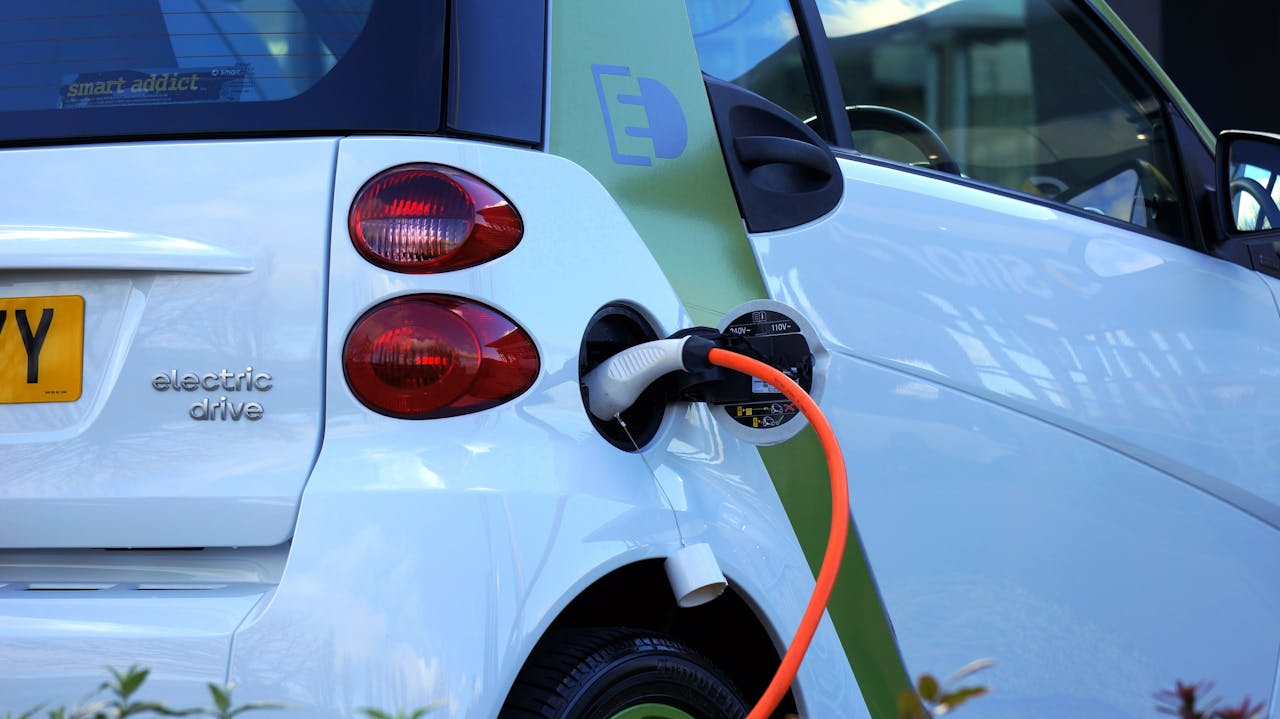Choosing the best New Energy Vehicle (NEV) in 2025 can be challenging with so many options available. With the rapid development of NEVs globally, more and more people are considering how to select an NEV that fits their needs. Especially in the European and American markets, advancements in battery technology and improved charging infrastructure have made NEVs a mainstream choice. But how do you determine which model suits you best? This article explores key factors to help you make an informed decision when purchasing your NEV.
1. Range: Balancing Daily and Long-Distance Needs
The range of an NEV is one of the most critical factors in purchasing decisions. Although the range of electric vehicles has improved with technological advancements, the requirements for range vary depending on different usage scenarios.
• Short commutes:
If your daily commute is simple, a range of around 300 kilometers for an electric car is sufficient. For example, the Tesla Model 3 Standard Edition and the Nissan Leaf are within this range, meeting the daily needs of urban residents.
• Long-distance travel:
For users who need to travel long distances regularly, it is better to choose a model with a higher range. Vehicles like the Tesla Model S Long Range and the Lucid Air have ranges of over 500 kilometers, making them more suitable for long drives.
In-Depth Analysis:
The key to choosing the right range lies in evaluating your actual usage scenario. For instance, if you only travel long distances 1-2 times a week and primarily drive short distances, a car with a range of 350 kilometers will meet most of your needs and avoid unnecessary overdesign, lowering the purchase cost.
2. Charging Convenience: Fast vs. Slow Charging
Charging is a major challenge when using electric vehicles. Charging convenience is determined not only by the availability of charging stations but also by charging speed. For users who do not have a private garage or often travel, the widespread availability of charging networks is especially important.
• Home Charging:
If you have a garage and can install a home charging station, charging time is not a major issue. Most NEVs support home charging, but fully charging the car can take 8 to 12 hours.
• Public Charging Stations:
For users without private charging facilities, the distribution of charging stations is crucial. Tesla’s Supercharger network, ChargePoint, Ionity, and other platforms are among the most widespread charging options, able to charge the battery to 80% within 30 minutes.
In-Depth Analysis:
The choice of model should depend on the charging infrastructure in your area. For example, in large cities in the U.S., charging stations are denser, and choosing a model that supports fast charging will greatly improve convenience. In rural areas with fewer charging stations, higher range or better in-car charging speed might be necessary.
3. Battery Life and Replacement Cost: A Long-Term Investment
The battery is one of the most expensive components of an electric vehicle. The battery’s lifespan, rate of performance degradation, and replacement cost all affect the long-term usage cost.
• Battery Life:
Most electric vehicle batteries last around 8 years, but differences in battery technology across brands can lead to varying rates of degradation. Brands like Tesla and BMW use advanced battery management technology, which results in slower degradation.
• Replacement Costs:
Replacing the battery is often a significant expense for electric vehicle users. The cost of battery replacement can range from $5,000 to $10,000. Choosing a vehicle with slower battery degradation and lower maintenance costs will save you money in the long run.
In-Depth Analysis:
Although most electric vehicles perform well within the battery warranty period, it’s essential to pay attention to battery technology and brand reputation. For instance, Tesla’s battery technology is relatively mature, with a low rate of degradation, while some newer brands may carry a higher risk of faster battery degradation.
4. Performance and Driving Experience: Not Just Acceleration, But Comfort
The performance and driving experience of an electric vehicle are increasingly important factors for consumers when purchasing. The acceleration ability, handling performance, and comfort of the ride all directly affect the driving experience.
• Acceleration Performance:
Electric vehicles usually have strong acceleration capabilities. For example, the Tesla Model S Plaid can accelerate from 0 to 100 km/h in just 2 seconds, making it a representative of super-fast cars.
• Driving Comfort:
Beyond acceleration, the suspension system and handling also play crucial roles. Luxury brands like the Audi e-tron and BMW iX3 provide a smooth driving experience, making them suitable for long drives.
In-Depth Analysis:
For consumers who frequently drive on highways, the stability of handling and low cabin noise levels will directly affect driving comfort. Luxury electric vehicles generally perform better in these areas, while economy models may make certain compromises.
5. Safety: From Crash Tests to Battery Safety
The safety of electric vehicles is vital, whether it’s from the structural integrity of the vehicle or the safety of the battery. The results of crash tests and the availability of active safety features should all be considered.
• Crash Tests:
Electric vehicles from brands like Tesla and Audi e-tron have performed well in crash tests in the European and American markets, ensuring a high level of safety.
• Battery Safety:
The safety of the battery is central to electric vehicle safety. A high-quality battery management system can effectively prevent potential dangers like battery overheating and short circuits. Tesla and BYD’s battery management systems excel in this area.
In-Depth Analysis:
While most electric vehicles perform well in crash tests, it’s important to focus on the battery’s safety features. Choosing brands with multiple battery protection systems can effectively reduce risks in case of a collision or short circuit.
6. Purchase Budget and Long-Term Costs: Balancing Savings and Enjoyment
Although electric vehicles tend to have a higher initial purchase price, they may be more cost-effective in the long run due to lower maintenance costs and significantly lower energy expenses compared to traditional fuel vehicles.
• Purchase Cost:
There is a considerable price difference between different models. The Tesla Model 3 starts at $39,990, while high-end models like the Lucid Air start at $77,000. You can choose a model that fits your budget.
• Long-Term Costs:
The daily energy costs for electric vehicles are much lower than those of traditional fuel vehicles, and maintenance costs are also lower. In particular, electricity prices are usually lower than fuel prices in many parts of the U.S. and Europe, further reducing operating costs.
FAQ: How to Choose the Right New Energy Vehicle?
1. How long can an electric vehicle’s range last?
The range of an electric vehicle depends mainly on factors like battery capacity, driving habits, vehicle weight, and weather conditions. Generally, the range of modern electric vehicles is between 300-500 kilometers, but in cold weather or while driving at high speeds, the range may decrease. For most daily commuters, an electric vehicle with a range of 300 kilometers is sufficient.
Tip: If you plan to travel long distances, choose a vehicle with a longer range or ensure there are charging stations along the route for added convenience.
2. How do I know if my city has enough EV charging stations?
Charging station availability varies by region. In most U.S. and European cities, the charging infrastructure is well-developed, especially with Tesla offering a widespread network. You can use apps like PlugShare or ChargePoint to check for nearby charging stations.
Tip: Before purchasing, check whether your home and frequent destinations have charging facilities, especially fast-charging stations.
3. What is the lifespan of an electric vehicle’s battery?
The battery life of most electric vehicles is around 8-10 years, but this varies based on the brand, vehicle usage, and battery management system. High-end brands like Tesla and Mercedes-Benz have more advanced battery technology, leading to longer battery life. Battery degradation typically occurs slowly, and most brands offer warranties for 8 years or longer.
Tip: When buying an electric vehicle, make sure to understand the battery warranty policy and choose brands that offer long-term coverage.
4. Are electric vehicles more expensive than traditional fuel cars?
Yes, electric vehicles generally have a higher purchase price than traditional fuel vehicles of the same class, mainly due to the high cost of battery technology. However, with improvements in battery technology, prices are gradually falling. Additionally, electric vehicles have lower long-term maintenance costs since they don’t have the complex mechanical components of traditional engines, and energy costs (electricity) are usually lower than fuel costs.
Tip: Although the initial purchase cost of electric vehicles is higher, they may be more cost-effective in the long run due to government subsidies, low maintenance costs, and energy savings.
5. Why are some electric vehicles so fast in acceleration?
Electric vehicles typically offer more powerful acceleration than traditional cars due to the immediate torque output from the electric motor. In contrast, traditional vehicles need time to rev up their engine to generate higher torque. As a result, many electric vehicles, like the Tesla Model S Plaid, can accelerate from 0 to 100 km/h in just a few seconds.
Tip: If you enjoy driving high-performance cars, the Tesla Model S Plaid, Lucid Air, and other electric supercars would be great options.
6. Are electric vehicles suitable for long-distance travel?
Whether an electric vehicle is suitable for long-distance travel depends on several factors, including range, distribution of charging stations, and charging time. Some electric vehicles, such as the Tesla Model S Long Range, already offer a range of over 500 kilometers and support Supercharging, which can charge the battery to 80% in 30 minutes, making long-distance travel more convenient.
Tip: Before planning a long trip, make sure there are enough charging stations along the route and choose an electric vehicle with a longer range and fast charging capabilities.
7. How do I maintain an electric vehicle?
Compared to traditional fuel vehicles, electric vehicles require less maintenance. The main maintenance tasks include checking the tires, brake system, and battery management system. Since electric vehicles do not have traditional engines, there is no need for regular oil changes or fuel system cleaning.
8. How safe are electric vehicles?
Electric vehicles (EVs) perform excellently in crash tests, particularly in safety assessments in Europe and the United States. EVs are typically equipped with advanced safety technologies such as automatic emergency braking, blind spot monitoring, and more. Additionally, the battery management system provides extra protection for battery safety. Brands like Tesla and Audi e-tron have received high safety ratings for their electric vehicles.
Tip: When selecting an electric vehicle, you can refer to crash test ratings and the vehicle’s safety features to ensure you choose a model with high safety standards.
Conclusion
Choosing the right new energy vehicle involves considering multiple factors, including range, charging convenience, performance, safety, and your budget. With the continuous advancement of electric vehicle technology and government policy support, more and more new energy vehicles are becoming the first choice for consumers. We hope that through this in-depth analysis, you will be able to choose the new energy vehicle that best suits your needs.
Share and Comment
If you found this article helpful, don’t forget to share it with your friends and family! Also, feel free to share your experiences or thoughts about new energy vehicles in the comment section.







